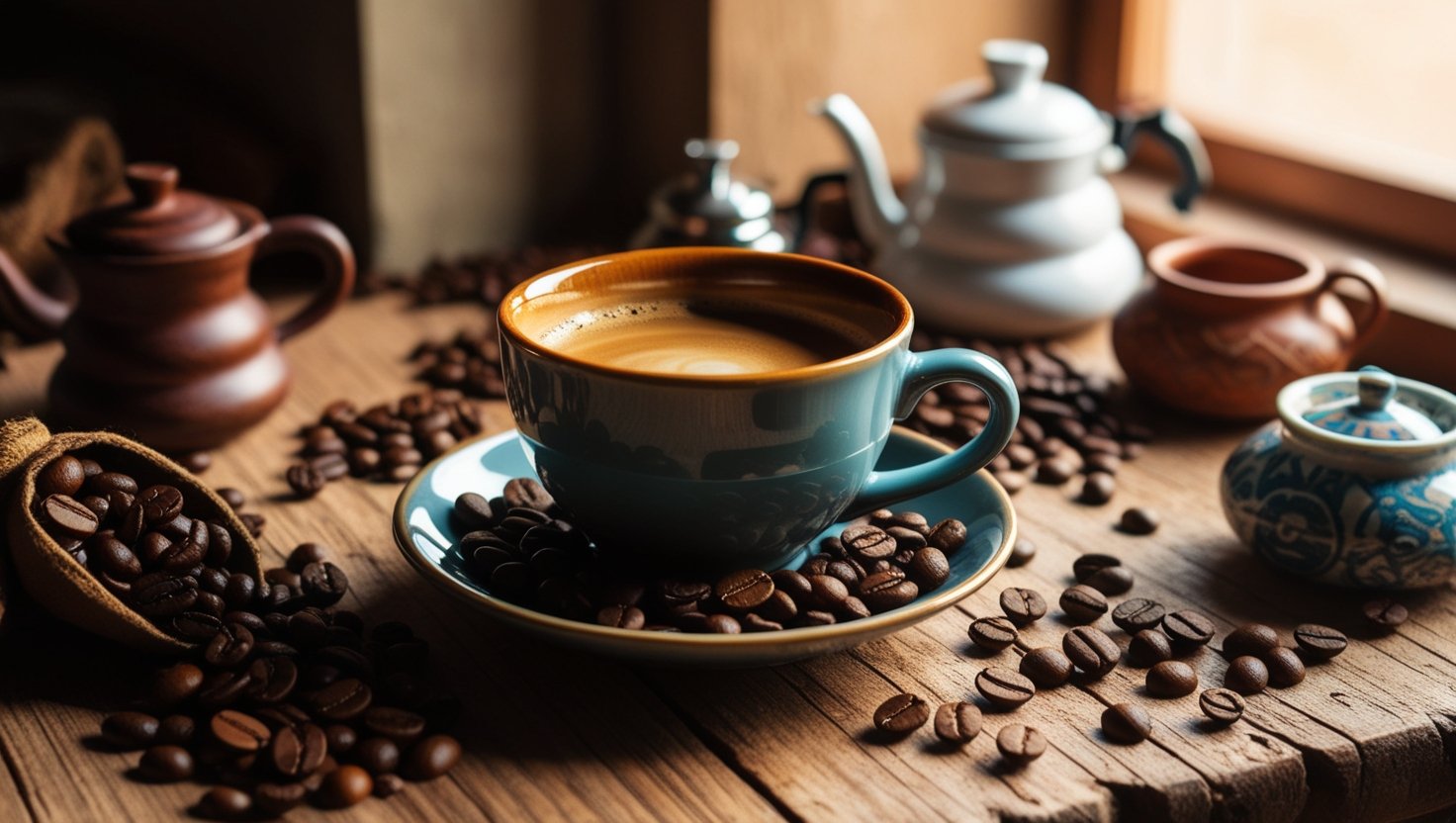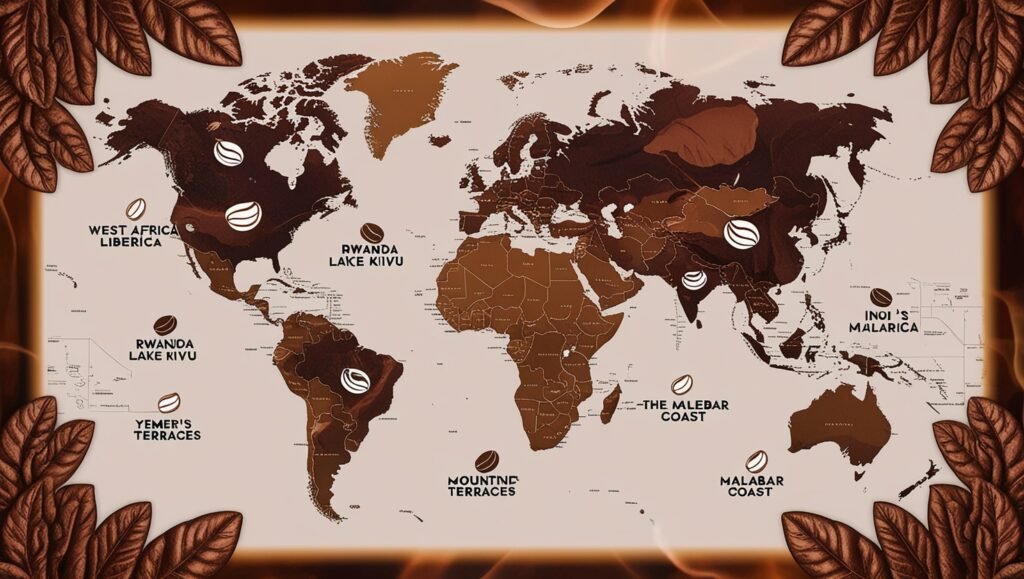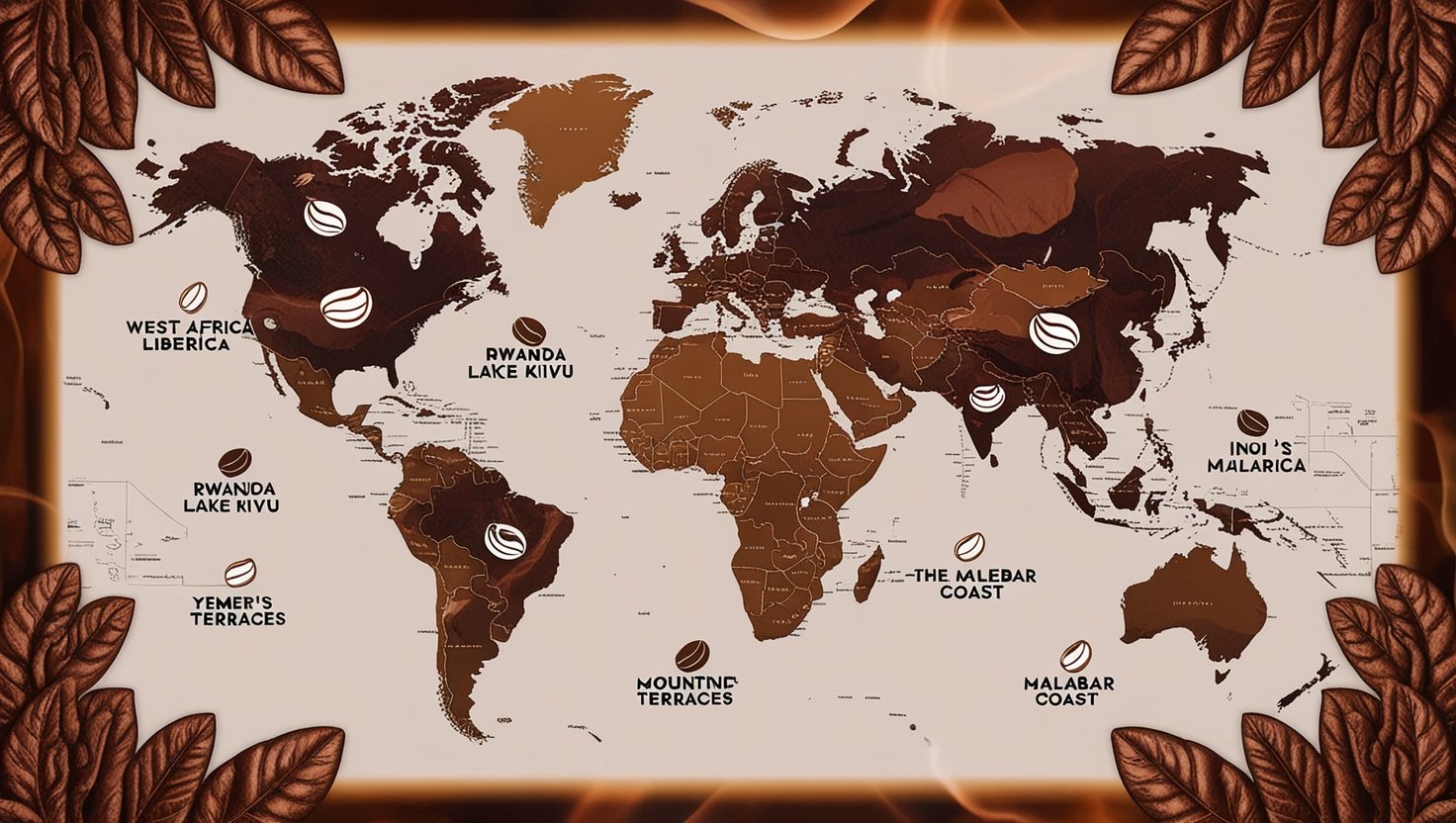The Most Underrated Coffees in the World
Why You’re Probably Missing Out By Coffea Alchemy

It Started With a Cup of Silence
I was sitting in a dusty courtyard in Harar, Ethiopia, sipping a cup of coffee that changed everything I thought I knew. It wasn’t fancy. No latte art. No maple-sweet vanilla froth. Just a small ceramic cup of deep, fruit-toned brew made over charcoal by a local woman who’d likely roasted the beans that morning. It had notes of blueberry and raw cocoa, with a hint of spice — and zero pretension.
I remember thinking: Why isn’t this famous? Why don’t more people talk about this?
The answer is simple: most people stick with what’s popular — not what’s exceptional. And that’s how so many coffees go underrated.
In this article, we’re diving into the hidden gems of the coffee world — the brews, beans, and regions that quietly outperform the spotlight-hoggers. These are the coffees your taste buds have been waiting for, even if your feed hasn’t heard of them yet.
1. Liberica: The Forgotten Coffee Species
You’ve heard of Arabica and Robusta — the Coke and Pepsi of coffee. But there’s a third player in the game: Liberica. Native to West Africa but now primarily grown in the Philippines and Malaysia, Liberica beans make up less than 2% of global production.
Its flavor? Wild. Smoky. Floral. Some even describe it as jackfruit meets dark chocolate. It’s divisive, sure — but undeniably bold.
Liberica is also resilient to disease and climate change, making it a potential future hero crop. Yet, most people have never even heard of it.
📊 Stat: According to the International Coffee Organization, Liberica accounts for just 1.5% of global coffee exports. (ICO, 2023)
2. Rwanda’s Bourbon Beans: Bright, Balanced, Overlooked
Ethiopia and Kenya often steal the African spotlight, but Rwanda is quietly producing some of the most complex coffees in the world. Especially the Bourbon varietal grown at high elevations around Lake Kivu.
Expect vibrant acidity, a tea-like body, and sweet citrus notes. It’s the kind of coffee that doesn’t scream — it whispers, elegantly.
Why the lack of fame? Possibly because of Rwanda’s limited export scale and relatively recent reentry into the specialty coffee world after years of conflict.
3. Yemen’s Ancient Mokha: Lost in Time
Before Starbucks, before espresso, there was Yemen — one of the original birthplaces of the coffee trade. The ancient port of Mokha gave its name to the chocolatey “mocha” flavor we talk about today.
Real Yemeni coffee is grown in small plots, often on centuries-old terraces. The beans are naturally processed, sun-dried, and wildly unpredictable — but when they’re good, they’re unforgettable: rich with dried fruit, winey acidity, and spice.
📉 Stat: Yemen’s coffee production has declined by over 50% since 2010 due to water scarcity and political instability. (FAO, 2022)
4. Indian Monsooned Malabar: A Taste of the Ocean
Ever tasted a coffee aged in a monsoon? That’s what Monsooned Malabar from India delivers. The beans are exposed to high humidity during monsoon season, swelling and mellowing as they absorb moisture.
The result: low acidity, heavy body, and earthy notes of wood, tobacco, and cocoa. It’s polarizing — but if you like aged cheese or barrel-aged whiskey, this might be your next favorite cup.
Most people dismiss Indian coffee as “cheap filler.” Big mistake.
5. Cold Brew from Low-Acidity Beans: Subtle, Not Basic
Cold brew is popular, sure — but not all cold brew is equal. While dark roasts often dominate, light-to-medium roasts from Brazil or Peru with naturally low acidity make for stunningly smooth cold brews.
These coffees aren’t flashy. But they’re consistent, balanced, and easy on the stomach. They’re not Instagrammable, but they’re perfect for daily drinking — underrated in flavor, not in performance.
So, Why Are These Coffees Underrated?
-
Lack of marketing – Big coffee brands stick to what sells.
-
Unfamiliar flavor profiles – Smoky? Funky? Fermented? Many people are hesitant to try unusual coffees.
-
Supply chain complexity – Some of these beans come from hard-to-reach regions with minimal infrastructure.
-
Cultural assumptions – We assume good coffee must come from the same few “hot” countries or cafes.
Where Coffea Alchemy Comes In
At Coffea Alchemy, we explore stories like this — not just what’s trending, but what’s real, rich, and often overlooked. We believe the best coffee moments often come from unexpected places — and we’re here to help you discover them.
Whether it’s decoding the flavor map of Yemen’s Mokha or tracking the revival of Liberica in Southeast Asia, our mission is simple: to help you taste more and follow your curiosity deeper into the cup.
Final Sip: Rethink What You Know About Coffee
So next time you shop for beans or walk into a café, skip the standard blend. Ask for something different. Something with a story. Something that might just be a little… underrated.
Because the best coffee isn’t always the one with the biggest label. It’s the one that stays with you long after the last sip.
Which underrated coffee are you most curious to try next?
Table of Contents
Related Post
Our newsletter
Subscribe to our weekly newsletter & keep up with our latest recipes and organized workshops. You can unsubscribe at any time.


